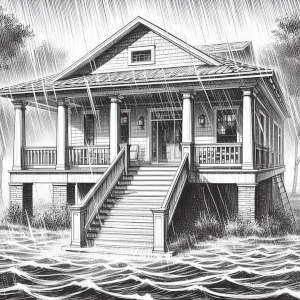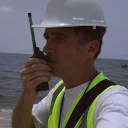Connect & Support
Support our ongoing development. Michael Arnone's Jambalaya Mix
By Murray Wennerlund published 9-28-2023 updated 1-24-2024
The Federal Emergency Management Agency (FEMA) takes on the primary responsibility of coordinating disaster response and recovery efforts. For individuals and households, FEMA is the primary hub for gathering important documents, collecting information, and assessing the extent of damage. Registering with FEMA is a prerequisite if you plan to apply for and receive FEMA Individual and Household Program (IHP) Grants and HUD CDBG-DR Grants. This step is important because grants, unlike loans, do not need to be repaid as long as the funds are used for approved activities outlined in your grant award documentation.
How to secure financial assistance following a presidentially declared disaster?
- Register with FEMA online at DisasterAssistance.gov. This step is crucial. With your FEMA registration number, you'll be able to apply for FEMA grants, temporary housing, other needs assistance and HUD CDBG-DR long-term recovery grants. It's recommended that you apply online; otherwise, you'll have to wait until FEMA sets up a registration location in your area.
- Contact your insurance company promptly to initiate the claims process. Make sure to document the damage by taking photos and keeping records of all communication with your insurer.
- Seek local assistance. Local government agencies, faith-based organizations, and nonprofits often play a significant role in disaster recovery efforts. Reach out to your local emergency management office or community organizations for guidance and support.
- After March 2024, FEMA's policy forcing households into SBA loans changes. SBA loan applications won't be required. If your household income is below 120% AMI, explore HUD CDBG-DR Grants before considering SBA as a last resort for post-disaster rebuilding funds.
- Maintain copies of vital documents, such as your insurance policies, home inventory, and any correspondence related to the disaster and recovery efforts.
Experiencing damage to your household due to a major event, which has now been classified as a presidentially declared disaster, can be a challenging situation. To help you navigate through this difficult time and initiate the recovery process, follow these initial steps:
- Ensure Safety: The safety of you and your family should be the top priority. If the damage is severe and your home is not safe to inhabit or you are unsure, evacuate immediately and seek temporary shelter with friends, family, or at a designated emergency shelter.
- Contact Authorities: Report that your primary residence was damage to local emergency services, such as your emergency management contact. Find your Emergency Management contact using resource links provided by FEMA disaster declarations and U.S. Department of Housing and Urban Development (HUD) State Resource library, Disaster Relief - Emergency Management contact information.
- Contact Your Insurance Company: Notify your private insurance company about the damage as soon as possible. This includes auto, RV, boat, home, garage, accessory buildings that have insurance policies. They will guide you through the claims process and assess the coverage for the losses you've incurred.
- Register for Federal Assistance: Once the disaster is declared by the president, register for disaster assistance with FEMA (Federal Emergency Management Agency). You can apply online through disasterassistance.gov or call the FEMA helpline at 1-800-621-3362. Have your Social Security number, insurance information, and a description of your damages ready when registering. Search for your Declared Disaster.
- Document the Damage: As soon as it's safe to do so, take time-date stamped photos and videos of the damage to your structures on your property. Do this before you attempt to return home. This documentation will be crucial when filing insurance claims and applying for disaster assistance.
- Follow Official Instructions: Stay informed about updates and guidance from local authorities, FEMA, and other relevant agencies. They will provide information on available resources, recovery centers, and assistance programs.
- Mitigate Further Damage: Take necessary steps to prevent further damage to your property, if possible and safe to do so. This may include covering broken windows, tarp damaged roofs, or turning off utilities if necessary.
- Keep Records: Keep a record of all communication with authorities, insurance companies, and agencies involved in the recovery process. Note down names, dates, and the content of conversations for future reference.
- Seek Local Assistance: Reach out to your local emergency management office, nonprofit organizations, or community groups that may offer additional support and resources during the recovery process.
- Stay Patient and Persistent: Recovering from a major disaster is a long and challenging process. Be patient and persistent in seeking assistance and support. There may be bureaucratic hurdles, but perseverance is key to accessing the help you need.
Recovering from a major disaster is a collaborative effort involving federal, state, and local authorities, as well as community support. Reach out for help when needed, and take advantage of available resources to aid in your recovery.
Lookup your FEMA Disaster Identifying number.
Your disaster will now be issued an identifying number in a format of DR-1234-LA or EM-1234-LA
When you visit your disasters main FEMA page you should find updated information that is provided by your local municipality and your state for FEMA to publish.
This page FEMA created is technically your state page for all resources related to your declared disaster.
Search for your Declared Disaster.
From your declared disaster page look for the quick links section.
- Quick Links
- Recovery resources: State & Local | National
- Connect: Social Media | Mobile App & Text
- 24/7 counseling: Disaster Distress Helpline
Your first resource to follow from the FEMA Quick Links is your State and Local Recovery Resources. This resource will be different between states and disaster declarations. Your state provides FEMA with descriptions and contact information for the following categories designed to assist individual and household disaster survivors.
Your first week after your declared disaster will be more than just a normal week. It's best to delegate tasks to household members, friends, family, as well as community groups. You may be on the phone for hours, adding your property to volunteer groups and lists so volunteers know you need help. Your personal and household networking skills will come into focus within 72 hours after the declared disaster.


